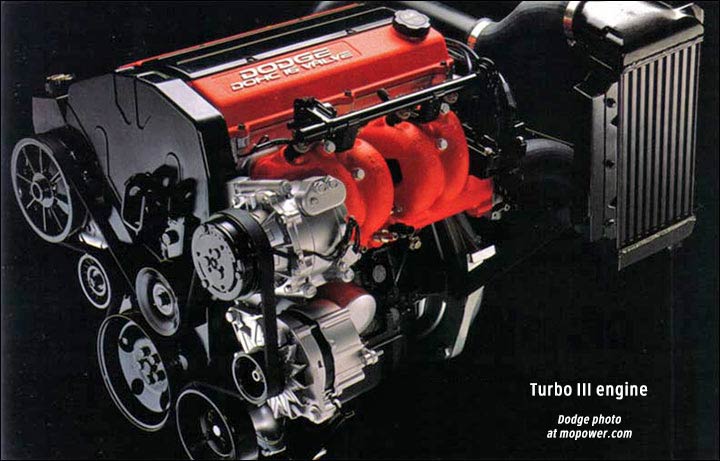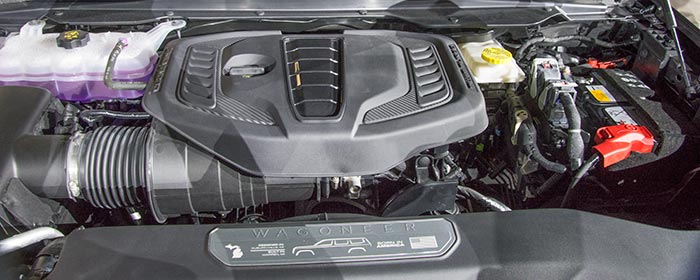Chrysler seems to be traveling to a future without V8 engines in its light duty cars and trucks. Some hate the idea, but it’s all in the Mopar tradition.
The Dodge brothers never made a car with an eight cylinder; they stuck with four-cylinders. When Walter P. Chrysler was President of Maxwell and then of Chrysler, they made some straight-eights, but no V8s, and mainly used six-cylinder engines once Plymouth gave up its four-cylinders. The original Chrysler had a straight six—an unusually powerful one which gave many eight-cylinders a run for their money.

Back in the 1930s, when Ford came out with its vaunted V8, Plymouth stuck with a six cylinder—which, in fair testing, was known to beat the V8 Fords.
Chrysler gained its first V8 in its top 1951 cars; and Jim Zeder had to fight to get it. Soon they were mass-producing V8s, but that was to avoid being buried by Chevrolet and Ford (and GM and Ford’s higher brands). High performance, truly mass produced V8s arguably did not reach Dodge until 1958 with the B series.
In the 1980s, Chrysler largely let its trucks and commercial vans drift while they focused on engines that could power minivans and smaller cars—the 2.2 and 2.5 four-cylinders, then two related families of V6 engines. The 2.2 liter turbo cars could whomp GM and Ford V8s of the day, especially the Turbo III and Turbo IV engines; but even the intercooled, ordinary Turbo II engines were quite capable in their front drive cars. Their horsepower dominated common V8s, including the company’s own “LA” engines. At the time, Chrysler’s turbo solution worked on the street even if it didn’t work in marketing—many customers wanted a V6 even if it did not perform as well (possibly presaging today’s Hemi vs Hurricane).

For a time, the Dodge Intrepid was put up as a police car. Perhaps it didn’t sell as well as the antique Ford Crown Victoria, but it certainly performed better, with a “mere” V6 engine against the Ford V8—history repeating itself to a degree.
Some believe that the former Chrysler (FCA US)’s sales are faltering because the Hemi is out of production (at least the 5.7, Hellcat, and SRT 392 versions are); but a quick look at the car lots will show plenty of V8 power waiting for buyers. The sales slump which began last year has nothing to do with not having V8s, because new V8 cars and trucks were still being made—indeed, are still being made. The 2025 Ram 1500 with the Hurricane and the Dodge Charger Hurricane are not yet on dealer lots.

Some critics claim that the only popular or profitable Mopars are V8s. In addition to assuming information they do not have, they are ignoring the Jeep Wrangler, which does have a V8 option that is sold in very low numbers; the Wrangler and the V8-less Gladiator both sold well and at massive profits with a V6 and (for Wrangler) a four-cylinder hybrid option. For many, many years, the minivan was Chrysler’s standby, and it never had anything more powerful than today’s Pentastar V6 (indeed, in its most popular years, it was underpowered). The Ram 2500 and 3500 are known for Cummins I-6 diesel power, and the Ram 1500 is often sold with V6 engines. The Ram V6’s roughly-300-horsepower beats many of the muscle-car era’s most beloved engines, if we compare SAE net ratings rather than going gross-to-net. It sprints faster than the old 318 or 360 V8s; in the Charger, indeed, it’s just as quick as the 2007 Charger Hemi (5.7).
The irony is seeing people argue that instead of more powerful, more economical six-cylinder engines, we need to go back to V8s because they sound better, or are just “pure.”
Can Mopar live without V8s? It has done so before. Mopar has often made muscular cars with fewer than, or with more than, eight cylinders. The future will tell whether eight cylinders are essential, or whether net power is all that really matters.
Discover more from Stellpower - that Mopar news site
Subscribe to get the latest posts sent to your email.
